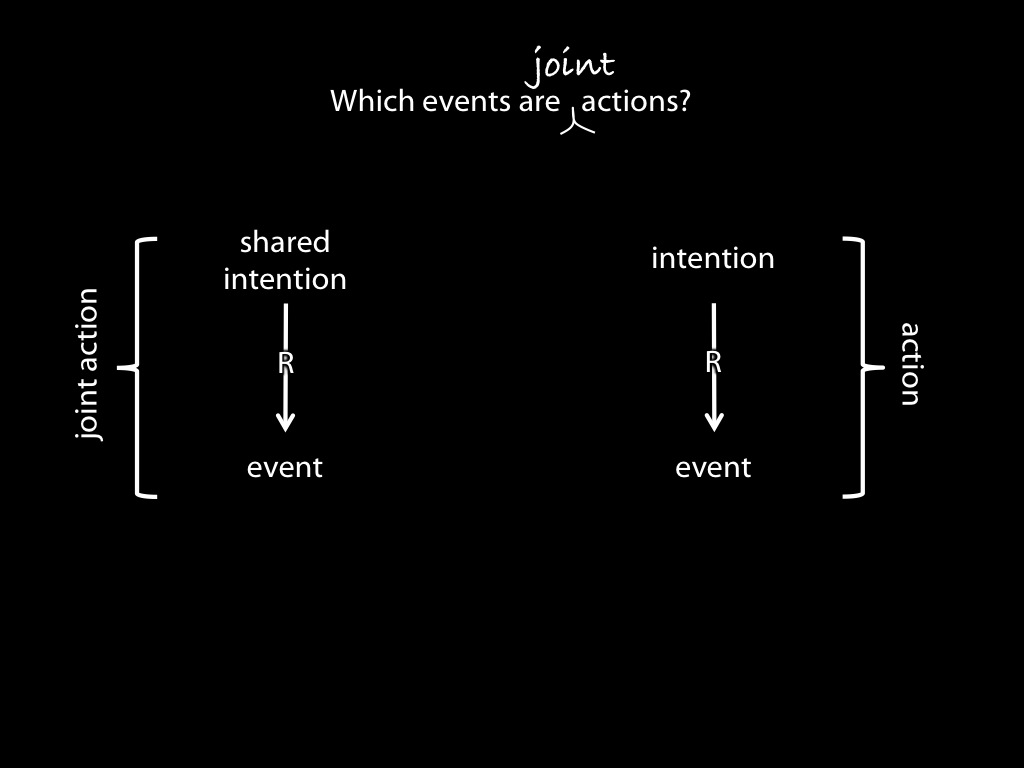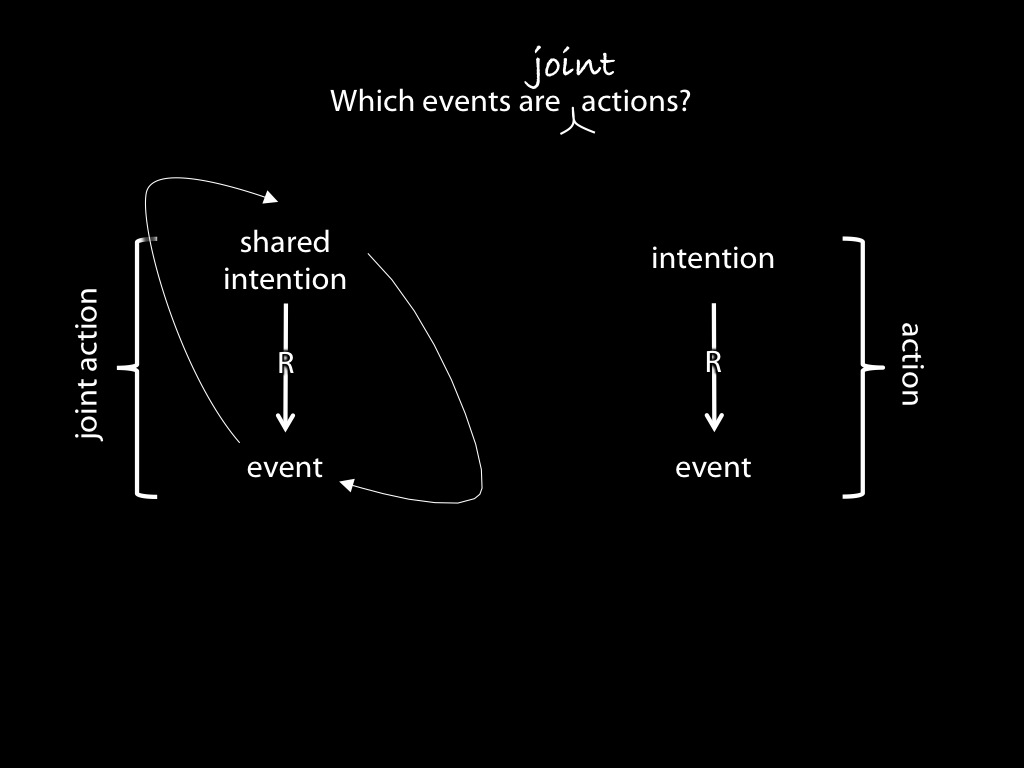Click here and press the right key for the next slide (or swipe left)
also ...
Press the left key to go backwards (or swipe right)
Press n to toggle whether notes are shown (or add '?notes' to the url before the #)
Press m or double tap to slide thumbnails (menu)
Press ? at any time to show the keyboard shortcuts
Joint Commitment and Shared Intention
‘joint commitment underlies a host of central social phenomena in the human realm’;
Gilbert (2013, p. 400)
it is a ‘precondition of the correct ascription’ of acting together, collective belief, shared intention, and more’
Gilbert (2013, p. 9)
Which forms of shared agency underpin our social nature?
Joint Action
Parallel but Merely Individual Action
Two people making the cross hit the red square in the ordinary way.
Beatrice & Baldric’s making the cross hit the red square
Two sisters cycling together.
Two strangers cycling the same route side-by-side.
Members of a flash mob simultaneously open their newspapers noisily.
Onlookers simultaneously open their newspapers noisily.
Question
What distinguishes genuine joint actions from parallel but merely individual actions?
the ‘shared intention’ strategy
‘the key property of joint action lies in its internal component [...] in the participants’ having a “collective” or “shared” intention.’
(Alonso 2009, pp. 444-5)


Can we use joint commitment to characterise shared intention?
Gilbert: joint commitment
‘a commitment
by two or more people
of the same two or more people.’
Contrast personal commitment (by me, of me)
joint commitment is ‘the collective analogue of a personal commitment’
Gilbert (2013, p. 85)
Contrast contralateral commitment (by me, of me, to you)
acting together
shared intention
For us to have
a shared intention that we φ
is for us to be jointly committed
to emulate a single body
which
intends to φ
The Disjunction Criterion
‘when two or more people share an intention, none of them need to have a contributory intention.’
Gilbert (2013, p. 103)
Compare blocking
But: collective vs shared!
‘When people regard themselves as collectively intending to do something, they appear to understand that, by virtue of the collective intention, and that alone, each party has the standing to demand explanations of nonconformity [...]. A joint commitment account of collective intention respects this fact. ’
Gilbert (2013, pp. 88–9)
Joint Action
Parallel but Merely Individual Action
Two people making the cross hit the red square in the ordinary way.
Beatrice & Baldric’s making the cross hit the red square
Two sisters cycling together.
Two strangers cycling the same route side-by-side.
Members of a flash mob simultaneously open their newspapers noisily.
Onlookers simultaneously open their newspapers noisily.

Gilbert: All joint commitments are commitments to emulate, as far as possible, a single body which does something (2013, p. 64).
In manifesting any collective phenomenon, we can truly say ‘We have created a third thing, and each of us is one of the parts’
Gilbert (2013, p. 269).
Gilbert’s reductionism
Question
What distinguishes genuine joint actions from parallel but merely individual actions?